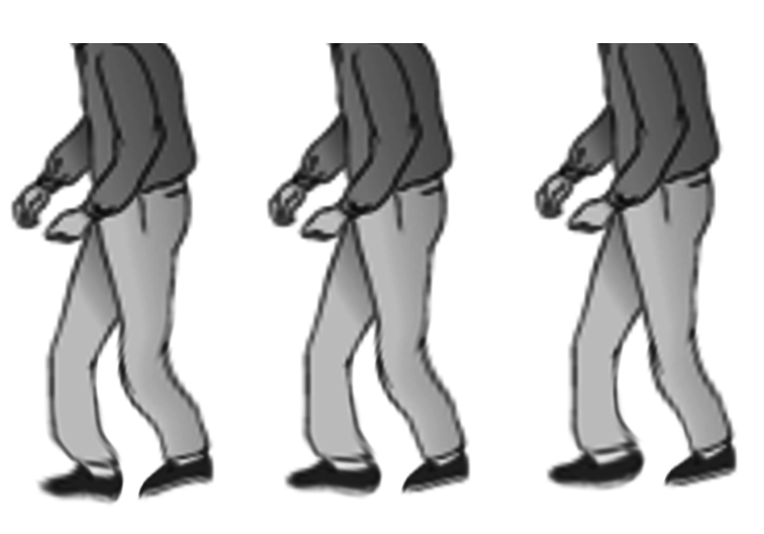What is Extrapyramidal Symptoms?
Extrapyramidal side effects (EPS) are typically known as movement disorders caused by certain medications. These effects are one of the most common negative reactions in patients who are taking drugs that block dopamine receptions. These were first recognized in 1952 when symptoms similar to Parkinson’s disease appeared after the intake of a drug called chlorpromazine.
Since then, a range of movement abnormalities related to EPS has been identified. These include dystonia, which is muscle contractions that cause irregular movements and postures, as well as akathisia, or a feeling of inner restlessness. These also include a type of movement disorder called parkinsonism. These issues tend to occur suddenly, but long-term effects such as persistent akathisia and a movement disorder named tardive dyskinesia can also develop over time.
EPS symptoms are very debilitating disturbances that interfere with a person’s social interaction, communication, physical tasks, and everyday activities. When these side effects occur, they often severely decrease the person’s quality of life and may lead to them stopping their medication. This can lead to them experiencing a relapse of their condition and possibly needing to be re-hospitalized. This is especially common in patients with schizophrenia who stop taking their medication.
What Causes Extrapyramidal Symptoms?
Medications that act on the brain and block dopamine, a type of brain chemical, can sometimes cause extrapyramidal symptoms (EPS). These symptoms involve movement disorders or issues. This is particularly common with older generation antipsychotic medicines like haloperidol and certain other drugs known as phenothiazine neuroleptics. Although the newer generation of antipsychotics are less likely to cause EPS, the risk increases if the dose is raised.
Other drugs that can cause EPS are those that block dopamine in the brain, including some drugs used to prevent nausea and vomiting (like metoclopramide, droperidol, and prochlorperazine), mood-stabilizing drug lithium, serotonin reuptake inhibitors (SSRIs, a type of antidepressant), stimulants, and drugs known as tricyclic antidepressants (another type of antidepressant).
In rare cases, certain antiviral medicines, medications for irregular heartbeat, and valproic acid (a medicine used to treat seizures and bipolar disorder), have also been implicated in causing EPS.
Risk Factors and Frequency for Extrapyramidal Symptoms
The probability of experiencing extrapyramidal symptoms (EPS), which are movement disorders, can differ based on the types of medication used. For example, first-generation neuroleptics, a type of drug often used to treat mental conditions, were linked to EPS in approximately 61.6% of patients in a study relating to people with schizophrenia in institutions.
However, more recent drugs known as atypical antipsychotics have shown reduced rates of EPS. The drugs clozapine and risperidone have the lowest and highest risks respectively. When we talk about antiemetic drugs, which are used to control nausea and vomiting, EPS incidence is between 4% to 25% for a drug called metoclopramide and 25% to 67% for a drug named prochlorperazine. These particular antiemetics work by interacting with the dopamine D2 receptors in the body.
- Prior experience of EPS and a high dose of medication are known risk factors for EPS.
- Elderly females are more likely to develop drug-induced parkinsonism and tardive dyskinesia, which are two specific types of EPS.
- On the other hand, young males tend to show more dystonic reactions, which are another type of movement disorder linked to EPS.

Signs and Symptoms of Extrapyramidal Symptoms
Extrapyramidal symptoms (EPS) can present in many different ways. Dystonia, one common form, usually appears within 48 hours to five days of taking the problem drug. People with dystonia experience involuntary muscle spasms, which can cause unusual positions or repetitive movements. It can affect any muscle in the body, including the back, limbs, neck, jaw, eyes, abdomen, pelvis, face, and tongue. It’s important for doctors to check if these patients are having difficulties with breathing, swallowing, or speaking.
Akathisia is another type of EPS. It is characterized by an intense feeling of restlessness and an irresistible urge to move. People with this condition are often observed shifting weight from one foot to another or crossing and uncrossing their legs. This is usually noticed within four weeks of starting or increasing the dose of the problematic medication. However, as akathisia can create symptoms like anxiety and discomfort, it is often misdiagnosed. Incorrect diagnosis can lead to harmful situations like increased aggression or suicidal ideation as the severity of akathisia is linked with these problems.
Drug-induced parkinsonism is another form of EPS. People with this condition exhibit symptoms similar to Parkinson’s disease such as tremors, stiffness, and slowed movements. Physical signs often include expressionless facial features, hunched posture, and a slow shuffling walk. They may also have troubles with balance and getting up from a seated position.
Lastly, tardive dyskinesia is another form of EPS. This involves involuntary movements mainly affecting the mouth, face, and tongue, and less often the trunk and limbs. Although not typically painful, symptoms can interfere with social interactions and basic functions such as chewing, swallowing, and speaking.
Testing for Extrapyramidal Symptoms
Most of the time, it isn’t necessary to run laboratory tests or get imaging like x-rays or scans for a diagnosis. A doctor can often figure out what’s going on simply by talking to the patient about their health history and by doing a physical examination. This is especially true if the person has recently started a new medication. In many cases, symptoms can be traced back to reactions from a drug.
Treatment Options for Extrapyramidal Symptoms
If a patient is suddenly showing signs of EPS (extrapyramidal symptoms), particularly dystonia, which is a condition that involves involuntary muscle contractions, it’s important to check if they might need help to breathe. This is because dystonia affecting the throat and voice box can potentially block the airway, leading to a respiratory arrest. These reactions are typically not life-threatening and the first action should be to stop the medication that caused the reaction. If needed, the patient’s pain also needs to be managed.
If the medication causing the reaction is a first-generation antipsychotic, a newer type called an atypical antipsychotic could be used instead. Antimuscarinic drugs (benztropine, trihexyphenidyl) or diphenhydramine could also be given, which can alleviate the symptoms of dystonia quickly. In cases of tardive dystonia, a more persistent form of dystonia due to long-term use of certain medications, treatments may include benzodiazepine, botulinum toxin injections for facial dystonia, muscle relaxants such as baclofen, dopamine reducing drugs such as tetrabenazine, and even brain surgeries such as deep-brain stimulation or pallidotomy in severe cases.
For the treatment of akathisia, a condition that causes restlessness and a compulsion to move, similar strategies to dystonia management are used. These include stopping or reducing the dosage of the medication causing the problem, switching to an atypical antipsychotic, and administering antimuscarinic drugs. Other treatments which are commonly used for akathisia include beta-blockers (like propranolol), amantadine, clonidine, benzodiazepines, mirtazapine, mianserin (used for depression), cyproheptadine, and propoxyphene.
Tardive dyskinesia, a condition involving involuntary movements, often of the face, can be treated by stopping or reducing the medication causing it, switching to an atypical antipsychotic, stopping antimuscarinic drugs (although trihexyphenidyl can sometimes be beneficial), injecting botulinum toxin for facial dyskinesia, benzodiazepines, amantadine, and trying dopamine reducing medications like tetrabenazine. In some cases, levetiracetam, zonisamide, pregabalin, vitamin B6, and vitamin E have also been used as treatment options.
Drug-induced parkinsonism, a condition characterized by symptoms similar to Parkinson’s disease such as tremors and slow movement, can be treated with stopping or reducing the medication causing it, switching to an atypical antipsychotic, and using the same medications that are used for Parkinson’s disease, like amantadine, antimuscarinic agents, drugs that stimulate dopamine receptors, and levodopa.
What else can Extrapyramidal Symptoms be?
Extra-pyramidal symptoms (EPS) can be hard to distinguish from other unknown cause movement disorders. Similar symptoms such as muscle rigidity and tension might also pop up in other conditions like neuroleptic malignant syndrome, serotonin syndrome, and other movement related issues. Sometimes, Huntington’s disease (which is often identified through family history and genetic tests), Sydenham chorea (usually linked with a history of strep throat infections), and Wilson’s disease (common in teenagers due to a problem with copper metabolism), and patients with brain blood vessel damages might also show symptoms like- chorea and athetosis – involuntary jerking and slow twisting movements respectively.
In addition, the symptoms of akathisia, which include a flat facial expression, slowed physical and emotional reactions, and a low energy level, might look like the negative symptoms of schizophrenia. Besides, the restlessness in akathisia might even seem to be similar to anxiety and psychiatric agitation.
If there are memory and thinking problems along with parkinsonian signs and other movement abnormalities, the patient may need to be checked for conditions like Parkinson’s disease, Lewy body dementia, vascular dementia, and frontotemporal dementia. It’s also interesting to note that up to one-third of schizophrenic patients who have never been on medication might show parkinsonian signs when they first present the disease.
What to expect with Extrapyramidal Symptoms
Extrapyramidal symptoms (EPS), or movement disorders, usually go away on their own or improve with medication. These include conditions like acute dystonic reactions – sudden muscle contractions, which are often temporary.
However, there are instances where these muscle contractions continue for a prolonged period, a condition known as ‘tardive dystonia’, even lasting for years. A study that looked at 107 cases of tardive dystonia found that only 14% of patients got better over an average period of 8.5 years.
Likewise, ‘acute akathisia’, a state of restlessness, can also get better on its own or improve with the right medication. Yet, there are reported cases where this restlessness persists for many years.
‘Tardive dyskinesia’, a condition characterized by involuntary movements without purpose, usually lasts for a long time. In a study involving patients with schizophrenia, the persistence rate of tardive dyskinesia was recorded as high as 82%.
Possible Complications When Diagnosed with Extrapyramidal Symptoms
Laryngeal dystonia, a type of muscle disorder, can be caused by antipsychotic drugs or metoclopramide, a medication used for stomach and esophageal problems. This has mainly been reported in young men. Muscle breakdown or rhabdomyolysis is a rare side effect of drug-induced dystonia, particularly when this muscle spasm condition is prolonged.
A dangerous condition known as a dystonic storm can happen in people who already have primary known dystonia, such as Wilson disease or DYT1 dystonia. This situation is usually triggered by an infection or a change in medication. A dystonic storm presents serious symptoms like fever, fast heartbeat, rapid breathing, high blood pressure, excessive sweating, difficulty swallowing, and respiratory failure.
A connection has been found in patients with schizophrenia between the occurrence of these muscle-related side effects and poor adherence to their prescribed antipsychotic medication. This can, in turn, lead to schizophrenia relapse and necessitate hospitalization. Furthermore, failing to correctly diagnose and treat these symptoms is associated with thoughts of suicide, aggression, and violence.
Common Side Effects:
- Laryngeal dystonia triggered by certain medications
- Muscle breakdown (Rhabdomyolysis) due to prolonged dystonia
- Dystonic storm, triggered by infection or medication change, with symptoms such as fever, fast heartbeat, rapid breathing, and high blood pressure
- Potential schizophrenia relapse in patients failing to adhere to their medication
- Thoughts of suicide, aggression, and violence if symptoms are not correctly diagnosed and treated












